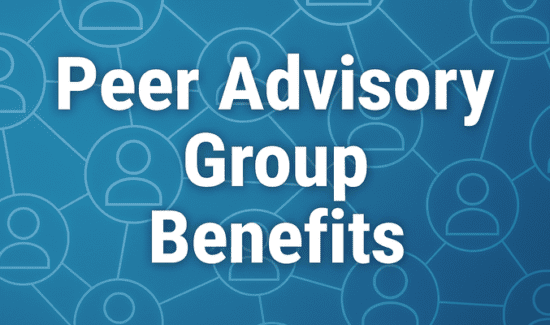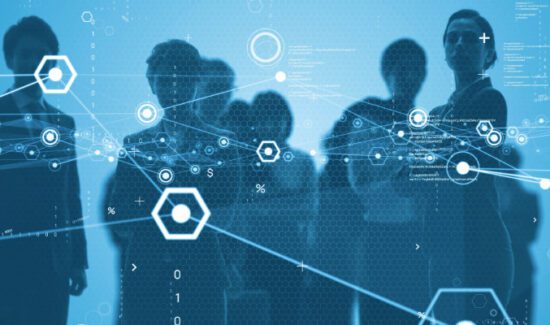From Productivity to Purpose: AI’s Role in Shaping Work Culture

Raz Dar, CEO of Elvee, recently shared some insights on how artificial intelligence (AI) is shaping work culture. From improving productivity to changing things like employee motivation or collaboration, Dar identifies some of the key ways AI is impacting the way we work.
Predictions about AI’s long-term impact vary almost as much as the number of ChatGPT inquiries per day. Every industry, from beauty to fast food, is going through a transformation, and this is just the beginning. Much of the current conversation focuses on whether AI will be responsible for layoffs or if it’s a means to boost productivity, serving as a powerful collaborator that can augment human intelligence. The conclusions of both often verge from one extreme to another.
While some projections may prove to be accurate, the truth is we don’t know exactly how it will reshape organizations and employees five, ten, or twenty years from now. However, the dichotomy of doom and gloom versus utopia overlooks a critical part of the picture: AI not just as a tool for efficiency, but also as a catalyst for purpose.
AI’s Impact on Productivity
Employees who know how to use AI efficiently no doubt increase their productivity and output. However, how much this scales across workforces is still uncertain. Four research studies released over the last six months reveal vastly varying insights:
- Generative AI triples work efficiency
- AI can increase productivity while decreasing motivation
- A study of experienced software engineers found that their tasks took 20 percent longer when using AI
- 77 percent of employees say it has added to their workload and created challenges.
Productivity increases (or decreases) due to AI use depend on factors such as industry, the skill and experience levels of the employee, and how it is being used. Many still view generative AI as a means to assist with menial tasks or as an enhanced version of Google search. However, they are not tapping into the vast imaginative and analytical capabilities of AI to help with far more than drafting an Instagram post. Brainstorming and creativity, improving writing and communications, or accelerating learning and research are some additional ways that AI can increase productivity. Where it gets interesting is when we think beyond productivity and towards purpose.
AI’s Role in Shaping Work Culture
AI tools today are making strides in helping shape work culture in tangible and meaningful ways—from internal communications and mindfulness support to increased training for managers, employee engagement, and retention. Even as far back as 2023, MIT research revealed that 75 percent of employees experienced improvements in team morale, collaboration, and collective learning due to AI. Additionally, the tool can predict gaps in team support before they impact the organization.
AI is reimagining how contact centers operate by helping managers with real-time coaching, feedback, and development. For example, they can analyze tens of thousands of employee data points, from performance metrics and work hours to traffic patterns and local events, and find correlations that would otherwise be invisible to even the most well-trained managers. The tools transform the data into actionable and measurable insights that can be easily implemented.
Beyond tracking productivity or script adherence, the platforms provide insights into engagement, stress, burnout, and team dynamics. Managers can respond to employees in individual ways, and they, in turn, feel more seen and valued in the workplace. By leveraging unique data points and applying specialized AI algorithms, workplace issues can be identified with over a 90 percent success rate, and resolving those issues that lead to attrition has a similar track record.
Employees spend so much of their lives at work, often with teammates they had no influence in selecting. It can feel like the lottery when it comes to collegial relationships at work, and hitting the jackpot with good team dynamics is a welcome surprise. Generative AI can support this by offering conflict resolution suggestions, collaboration tips tailored to personality types, and greater insight into the unseen challenges colleagues may be facing. This builds trust, empathy, and a deeper sense of connection across teams.
AI has the potential to make recruitment fairer and more inclusive by reducing the impact of unconscious bias in the hiring process. It can analyze resumes and candidate profiles based on objective criteria such as skills, experience, and qualifications, and focus on merit rather than personal identifiers that may trigger bias. These tools can also detect biased language in job descriptions and suggest more inclusive alternatives, widening the talent pool and promoting equity from the very first interaction.
When thoughtfully designed and monitored, AI-powered recruitment can be a significant step toward building more diverse and high-performing teams. Furthermore, it can help level the playing field between more junior and experienced team members at work when it comes to submitting new ideas, reducing unconscious bias.
AI can play a powerful role in aligning work with social impact by helping teams understand and measure the impact of their efforts on society and the environment. Companies such as Intel provide services that range from tracking carbon emissions to reducing their environmental footprint and meeting decarbonization goals. AI can surface meaningful insights from complex datasets. It can turn those metrics into clear, compelling narratives that connect day-to-day operations with the organization’s broader mission, showing how their work contributes to something bigger.
Thanks to daily innovations in AI, it’s an exciting time to experience work life evolve towards new chapters. Predictions about the long-term impacts are just that, predictions, for the time being. The key is to focus on how it can enhance our lives. As organizations look beyond productivity to foster deeper meaning in the workplace, AI emerges not just as a tool for efficiency but as a catalyst for purpose. By translating complex data into insights that illuminate social and environmental impact, AI enables teams to see the broader implications of their work. When used thoughtfully, AI can bridge the gap between daily tasks and a shared mission, helping individuals feel more connected, empowered, and motivated. As Steve Jobs said, the important thing is to “stay hungry, stay foolish.”




